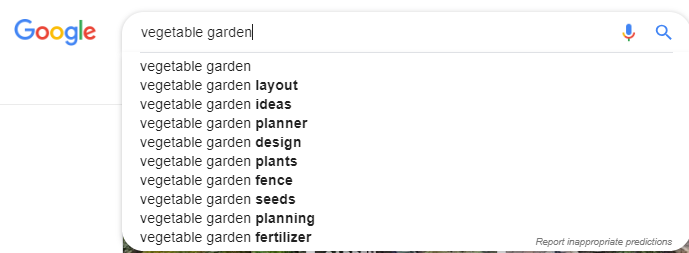Years ago, when the Internet was just a toddler, bloggers could get away with posting whatever they wanted whenever they wanted. At the time, there was very little content on the World Wide Web compared to the millions of terabytes of data found on the Internet today. Though they might have done some keyword research, it probably wasn’t nearly as important as it is today. If you are struggling to get web traffic, you may need to look at ways to improve SEO on your blog or website.
Today, it’s a little harder for bloggers to get their content out to readers because there is simply so much information for users to sift through. Writers today have to do a little research if they want to reach the billions of Internet users with their content.
The good news is, SEO (search engine optimization) is not as scary as it sounds. Keyword research will not take you much time at all once you are familiar with it, and it could help build your blog following.
Some people are SEO experts. It is their job to get webpages seen on search engine results. However, if you’ve decided that your business needs a blog, but you aren’t ready to hire a professional just yet, here are three steps you can take to help your posts make it into search results.
Step 1: Do a Google Search
When looking at SEO, it’s important to think like your reader. What is your reader searching for?
An easy (and free!) way to do this is take a look at Google’s predictive text feature. It literally shows you what people are searching for related to your topic.
It’s long-awaited springtime here in Montana, so I have my vegetable garden on my brain. If I look for the predictive text for the query “vegetable garden,” here is what I find:


Not only does this give me some ideas for long-tail keywords, but it also gives me some great ideas for new articles to write!
Step 2: Place Your Keywords
When it comes to placing keywords in an article, it seems that every blogger likes to do things a little differently. However, there are two things that are absolutely imperative.
Make it Natural
Plugging keywords for the simple act of doing so is a big no-no. Just like everything else in life (except for maybe coffee), strive for quality over quantity. Your writing should be quality first, quantity of keywords second.
Using keywords in your writing is like writing for a robot. Essentially, you are using keywords to entice a robot to pick up your article and rank it high in search results. Keep in mind, though, that you need to write for humans, too! Keywords are important for getting yourself seen, but if you go overboard, people who click through to your article won’t actually want to read it, so really, what’s the point?
Another notable piece of information is that as search engines improve their algorithms, they are finding ways to make sure that blogs that have been keyword-stuffed rank lower. If your article has an overabundance of keywords, it actually might not do as well in search results.
Remember: at the end of the day, you are writing for people. Whether you are entertaining, informing, or persuading them, you are writing for human beings. Don’t get so caught up in placing keywords that your content isn’t worth reading.
Place Your Keywords in Headings
Search engines like to pick up keywords in <h1> and <h2> headings, and they may rank that over a post that only has those keywords in the body text.
Think about it from a human standpoint: If you were skimming through a bunch of resources, you’d likely look for evidence of your search query in headings, too. This would ensure that a good portion of the content is probably related to the keywords versus only mentioning them in passing.
Making sure your keyword is placed uninterrupted in the title of your article is also an important step to improve SEO.
Step 3: Use Your Keywords Backstage to Further Improve SEO
Most blogging platforms allow you to customize options for each article you write. Two of these options in WordPress that can help with SEO, not to mention the overall navigation of your blog, are tags and categories. Other blogging platforms may call them by different names, but they generally have similar options.
Tags
Tags are basically keywords that describe the information found in your post. This would be another great spot to place your long-tail keyword. Just be aware that similar to putting keywords in your blog post, you don’t want to stuff the tags box. Less is more. Choose two or three well-researched keywords and call it good.
Categories
Categories are more hierarchical than tags. If you find you are using a tag repeatedly, it may be time to turn it into a category or subcategory. This easily allows readers (and, consequently, search engine crawlers) to find the information they are looking for on your blog more efficiently.
A Final Note on Keyword Research to Improve SEO
The Internet is full of fancy keyword tools you can use to complete your keyword research. Most of the really good keyword research tools cost money, and I’m kind of cheap, so I usually pass on those.
If you do decide to delve a little deeper into keyword research, WordStream is a good keyword tool with a free version.
I enjoy using these tools once in awhile depending on what audience I’m trying to reach, but I find plenty of luck in locating long-tail keywords by simply relying on Google Search.
Keyword research can be time consuming, especially if you’re just starting out; however, it will pay off as your articles begin to rank on search engines and more customers find your business.

